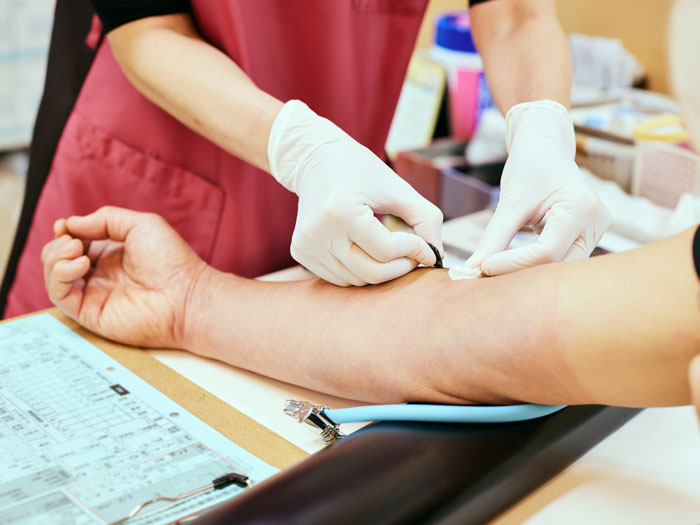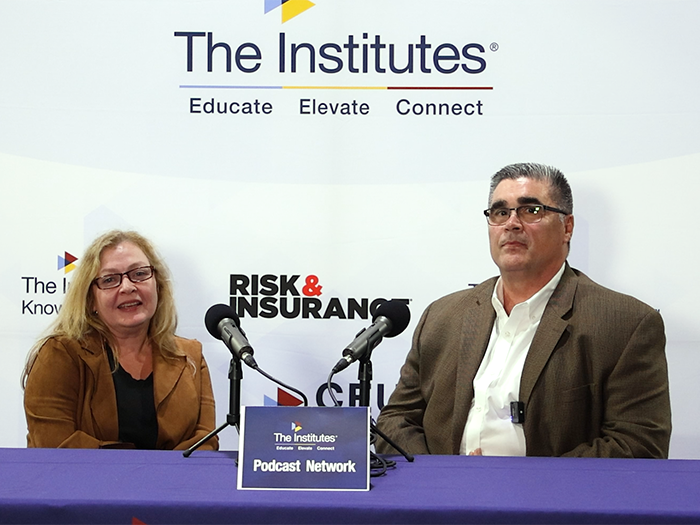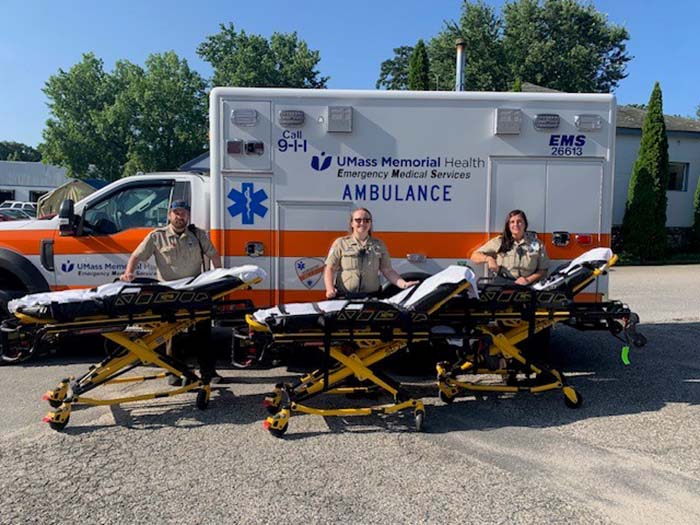Take a Proactive Approach to Employee Health and Reduce Workers’ Comp Spend with Preventive Cancer Screenings

In 2022, the American Cancer Society predicted 1.9 million new cancer diagnoses in the United States, which would lead to approximately 609,000 deaths. Overall, cancer is the second leading cause of death in the country after heart disease.
Several factors can make a person more susceptible to certain types of cancer, including genetic predisposition, age, overall health and wellbeing and more.
For some employees, like those in farming, firefighters, iron and steel engineers and others in chemical-heavy industries, exposure to cancer-causing substances can be a hazard of the job. Employers can reduce employees’ exposures to some of these potential carcinogens by adhering to Occupational Safety and Health Administration (OSHA) standards, implementing best safety practices and requiring the appropriate PPE to protect workers.
But cancer is as pervasive as it is prevalent.
Firefighters, for example, have a 9% higher chance of developing certain cancers than the average person and a 14% greater risk of dying from cancers. Pilots are six times more likely to develop melanoma, and studies show that iron and steel workers had a 500% higher lung cancer incidence rate. Even employees in seemingly harmless roles can be at an increased risk of disease, with the International Agency for Research on Cancer reporting “with high confidence” that nightshift work is carcinogenic to humans.
That’s why employers should consider another invaluable tool to protect workers: preventive cancer screenings.
“A cancer diagnosis is devastating. It’s traumatic for the patient and their loved ones, leading to questions and fears not only about their mortality — but also their continued ability to work and provide for their family,” said Michael Rhine, senior vice president, COO of Onsites at Concentra.
Early detection and diagnosis may offer hope, as Dr. Richard Amegadzie, vice president of medical operations for Concentra’s Onsite business unit explained: “The earlier you detect any type of cancer, it’s likely to be smaller, easier to treat and more localized. And with malignant cancers, the sooner you get them neutralized, removed or treated with chemotherapy, the less likely they are to metastasize, or spread throughout the body.”
The Workplace Benefits of Cancer Screenings
Preventive cancer screenings not only have the potential to detect cancer in its earlier stages, but they can also add to an employee’s chances of staying healthier, productive and part of the workforce for longer.
For employers, offering early cancer screenings as part of a workplace wellness initiative can help strengthen trust and boost morale, ensuring employees that their employer is taking a proactive role in their overall health and wellbeing.
Most workers in hazardous professions understand the potentially heightened risk of developing cancer. This can be a detriment to the business for a number of reasons.
“Employees working around certain chemicals or in an area like firefighting, where they could encounter asbestos and other toxic substances, can develop anxiety, leading some employees to consider leaving the profession altogether. This, of course, can boil down to labor shortages and other problematic work retention issues for the employer,” Rhine said.
But incorporating and supporting wellness efforts in the form of early and preventive cancer screenings, especially in these high-risk professions, can go a long way in showing employees that their health, wellbeing and overall safety come first.
And in today’s world, more employees are expecting that display of investment. Millennials and gen-Z routinely advocate for more employer involvement in their health and access to health technologies and make up the majority of the workforce. It is more important than ever to adopt a proactive, engaged and preventive health and wellness plan.
Placing an emphasis on early cancer screenings shows an employer’s desire to prevent disease and ensure a culture of safety, all while getting the job done.
Another meaningful benefit is the potential health care cost reduction that comes with preventive cancer screenings.
“A great deal of cancers detected and diagnosed in their later stages require more extensive workups, scans and biopsies — as well as a more extensive treatment regimen, which may include chemotherapy, radiation, and surgery,” explained Amegadzie.
Costs for such extensive and exhausting treatments can add up. In fact, cancer treatment overtook musculoskeletal injury treatment as the number one driver of employer health care costs in 2022. Not to mention, cancer is a leading reason for long-term disability and absence from work, Unum data shows.
For workers’ compensation, especially for jobs in high-exposure industries, preventive cancer screenings are an impactful resource, because they have the ability to detect cancer while the disease is more treatable and less costly, both in terms of medical spend and time away from work.
In conjunction with proactive cancer screenings, compliance with OSHA surveillance standards helps further reduce an employee’s risk of developing disease by limiting or eliminating their exposure to hazardous and potentially carcinogenic substances.
The Right Cancer Screening Tools
Once the decision to include cancer screenings into the employee wellness plan is made, employers will need to decide what screening tools are best suited for their needs.
Currently, there are four types of cancers that have recommended screenings: breast, colon, cervical and lung. But what about the other types of cancers out there?
One method some turn to is genetic testing, in which individuals submit to a blood draw to see if they have any genetic mutations that might predispose them to certain kinds of cancer. But this isn’t an early cancer detection method; instead, it can help to identify a person’s genetic potential for developing disease at some point in their lifetime.
To assist employers that want to include cancer detection as part of their overall employee health and wellness programs the team at Concentra Onsites, as an example, has partnered with with GRAIL and its multi-cancer screening tool, the Galleri® test.
“The Galleri test can detect a signal across more than 50 types of cancer with a single blood draw and has a low false positive rate,” Amegadzie explained.
“We’ve partnered with Galleri by helping them collect blood samples for their tests and staffing workplace screening events. Our physicians assist with ordering, results reporting and navigating individuals with ’cancer signal detected’ results toward the appropriate diagnostic next steps with medical care providers.”
It was a partnership born from a desire to support employers that are expanding their employee health and wellness programs. New, cutting-edge technologies, like the Galleri test, may also be the much-needed solution for detecting disease in employees who would not have access to cancer screenings otherwise.
It is important to note that the Galleri test should not be considered a substitute for single-cancer screening tests — like mammograms and colonoscopies — but, instead, the Galleri test offers a complementary tool for cancer detection. At this time, the Galleri test is recommended for use in adults with an elevated risk of cancer, such as those aged 50 and up.
Getting the Conversation Started
Knowing the benefits of cancer screenings and discovering the right tools is just the beginning.
Employers should continue in their efforts to follow OSHA’s guidance on exposure standards and surveillance. Pairing this with a proactive and preventive wellness program that includes workplace cancer screenings may be the next step.
Employers wishing to make these screenings a reality within their business should start the conversation now with their health care and workers’ compensation partners.
“On the workers’ compensation side, it’s about aligning the employer’s safety programs and OSHA-mandated surveillance programs to the most recent data for protection of employees,” Rhine said.
“It’s also working with unions and other employer organizations that could be involved to make sure that they’re on the same page and that the long-term health and wellness of their employees is at the forefront of their decision making.”
Pulling the company’s benefits provider and broker into the conversation will also be beneficial to implementing cancer screenings.
And the best part? This kind of proactive, forward-thinking doesn’t just help employers and employees potentially reduce the impact of a cancer diagnosis; this is the type of progressive workplace initiative that extends to many facets of worker health.
“It comes down to wanting to develop a wellness plan that incentivizes the employee around preventive screening, annual assessments and an overall healthy lifestyle, which can help lower almost all cause risks for virtually any type of personal health issue — keeping employees healthy and productive for longer. In turn, medical spend for employers, whether associated with cancer, diabetes, cardiac disease, hypertension, obesity — all of it — stands to show a favorable decline.” Rhine said. &












